 |
||
|
||
| ||
Contents
It's very interesting to watch the development history of a company, especially when it enters the era of 3D accelerators. For example, experienced readers and long-livers in this IT sector remember that at the dawn of 3D there were only two leading companies: Creative and Diamond Multimedia. By this time there sure were about a dozen of manufacturers, but again they were the most revered. ASUSTeK had been manufacturing video cards for a long time, but after the appearance of 3dfx Voodoo Graphics in 1997 it somehow faded into the background. The only ASUS video card to be remembered is Voodoo Banshee. Riva128 is not to be counted, because it was an arguable product due to buggy NVIDIA drivers and so it could not compete with Voodoo. But all Voodoo1/2 video cards were mostly manufactured by Creative and Diamond. However in 1998 NVIDIA proved that the failure with NV1 and mistakes with Riva128 did not break the young company from California and it launched an accelerator based on Riva TNT (Trinitrotoluene).
This time was a beginning of a new video card manufacturing epic of Gigabyte. Having suddenly appeared with new video cards, the company almost shocked users with excellent quality and interesting features of its products. On the photo below you can see RivaTNT2M64 (on the left) and RivaTNT2Pro (on the right). 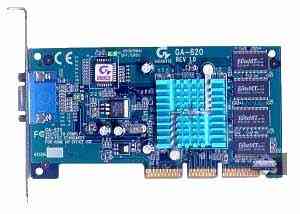
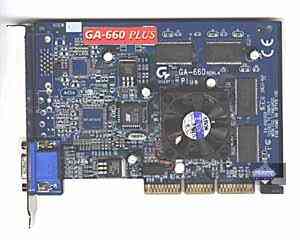 Video card based on TNT2Pro was particularly popular, those days it was almost a model of quality. Note the azure PCB unusual for those times and increased operating frequencies. It should be mentioned that though Diamond and Creative grandees proceeded with their mass production of 3D accelerators including video cards based on the latest designs, they still had to make room not only for ASUSTeK, but also for Gigabyte. And then the company stepped into the NVIDIA-mania era (without offense to NVIDIA :-)). 3dfx did not sell chips to anybody, its timid attempts to rebuild the relations with manufacturers were too late and did not save it from ruin. ATI was not doing well those days, its designs were of little use for competition, and the company manufactured video cards on its own.
That's why up to the end of 2001 we could see everywhere the blue products from Gigabyte (On the photos below GeForce 256 is on the left and GeForce2 GTS is on the right). 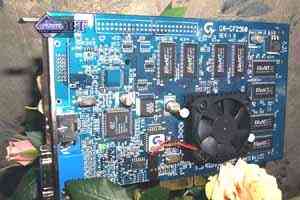
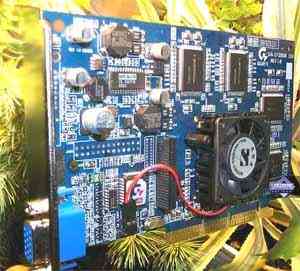 And there came some disappointment. It was caused by various products based on GeForce2 MX. Firstly, Gigabyte introduced a nasty habit to manufacture video cards with (I will not afraid this word) God-knows-what frequencies, sometimes unceremoniously cutting down the memory bus, though it could have been officially done only in MX200. This tradition is presently followed by Sapphire, that's why we often criticize this company. Moreover, after TNT2Pro with its brilliant 2D quality, they started to use cheap, low-grade chipsets, and that's all... The quality is gone. I still remember how Gigabyte and MSI used to be common nouns for this mess in forums and conferences. This surely undermined the company's authority. That's why when more powerful and expensive products were released (as those on the photos above), they were met with caution. Their reputation was gradually restoring with the release of high-quality video cards.
To my mind, video cards based on GeForce3 and its modifications were excellent (on the left photo below). 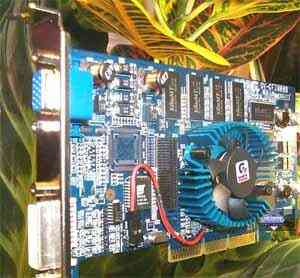
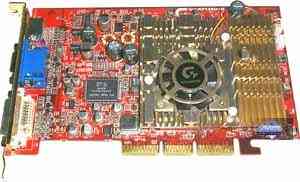
And they got a funny name – Thundra. A video card of a different color on the right photo above is non-random... The company took serious offence at NVIDIA (by the way, the ability of Gigabyte to easily take offence and dash aside would be later confirmed by other examples). We shall not mention the reasons, but they are purely of a financial and marketing character. And right after Hercules, which switched to manufacturing video cards based on ATI processors, Gigabyte also put its facilities to these video cards. The right photo displays the firstling – RADEON 8500. But the misfortune of the ill-starred company was not over. The Canadian company was still not used to the new methods, and besides, chipsets must have been provided not only for ATI but also for its partners. So the manufacturers had been suffering the shortage of its most popular chipsets for a long time. Nevertheless, Gigabyte started manufacturing video cards based on RADEON 8500 of its own design and even risked RADEON 8500XT (300 MHz). But ATI had very few such chips, and only 500 video cards were manufactured (the left photo below). 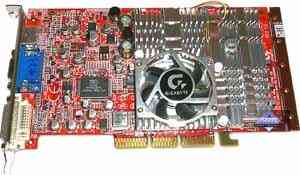
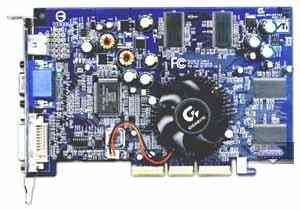 By this time the ATI cooperation euphoria was gradually abating. And a successful launch of GeForce4 Ti heavily undermined the established ATI positions in early 2002 (RADEON 8500 obviously couldn't compete with them in performance). This made the taiwanese to change their mood. As a result – they got back to the traditional blue PCB color, which you can already see in RADEON 8500LE with the new 9100 name on the right photo. Later on they told that mood where to get off, because ATI launched very popular and effective solutions: RADEON 9700/9000 etc. PCB color differentiation is as follows: if a card is red, it means that the card is either manufactured not by Gigabyte itself (expensive 9700/9800/X800, which are manufactured on a couple of plants by ATI request), or this card is based on R300/350/360/420. The lower cards (by the ATI hierarchy) of the taiwanese company became blue again, these are RADEON 9200/9000/9200SE. By the autumn 2003, when ASUSTeK entered the cockpit of the canadian influence, Gigabyte again changed its mood. Now it took some offence at ATI, because the chips were not delivered in sufficient numbers again, and Gigabyte as well as many other ATI partners was suffering from sharp deficit, which certainly influenced the turnout. And as you can guess, the taiwanese decided on the mode of work similar to ASUSTeK, when the company is not running between NVIDIA and ATI, but manufactures video cards based on chips from both companies. By this time the competition between the californian and canadian companied reached inconceivable proportions, and so both companies did not object to their partners working also with their competitor (if they only stay!). With this luggage Gigabyte is entering 2005. The latest video card in the series of the most powerful accelerators from NVIDIA is GeForce 6800 Ultra. Let's review a video card based on this chip. But before that, you should see the list of articles devoted to NV40.
Theoretical materials and reviews of video cards, which concern functional properties of the GPU
Video card
This card is obviously not designed by Gigabyte, it's a reference card. Even the cooling system is a reference one, only the heatsink cover is designed by Gigabyte, which is very strange. As a rule, the engineers from this company invent interesting and original solutions. However, in this case the muse was obviously mute and they came up with nothing. I think that there is not point in writing about the card itself, it's strictly of a reference design. I'll just remind you that the PCB is very complex, 10-layered, memory chips are all on the front side. There are two DVI-I connectors, so owners of the monitors with d-Sub will have to use adapters included into the bundle.
Let's have a brief look at the cooling system. In fact, that's all about the card itself.
What does it come shipped with?
Have a look at the box.
Installation and DriversTestbed configurations:
VSync is disabled. Test results: performance comparisonWe used the following test applications:
If you want to get the demo-benchmarks, which we use, contact me at my e-mail. Performance
ConclusionsWe have reviewed a product interesting from the point of view of its frequencies. As for the rest – it's a copy of the reference design. However, for many users it's a plus, because there is an opinion that such cards are the most reliable and durable as well as of a high quality, as they are tested by the chip manufacturer itself. As I have already noted, the card operates at increased frequencies in 3D, which is certainly attractive to users, taking into account the severe overall shortage of GeForce 6800 Ultra. That's why customers will simply sweep any video cards from the shelves these days (in mid October). Especially with this nice bundle including games! The bundle deserves praise just for the Thief DS game. However, another game (Joint Operations Typhoon Rising) also belongs to the modern and interesting. This card has demonstrated excellent 2D quality (1600x1200, 85-100Hz – like in a fairy tale!), wonderful operating stability, and low heating level even at increased frequencies. The cooler has rarely sped up to become too noisy. In our 3DiGest you can find more detailed comparisons of various video cards.
According to the test results, Gigabyte GV-N68U256D gets the Excellent Package award (October).  Write a comment below. No registration needed!
|
Platform · Video · Multimedia · Mobile · Other || About us & Privacy policy · Twitter · Facebook Copyright © Byrds Research & Publishing, Ltd., 1997–2011. All rights reserved. | |||||||||||||||||||||||||||||||||||||||||||||||||||||||